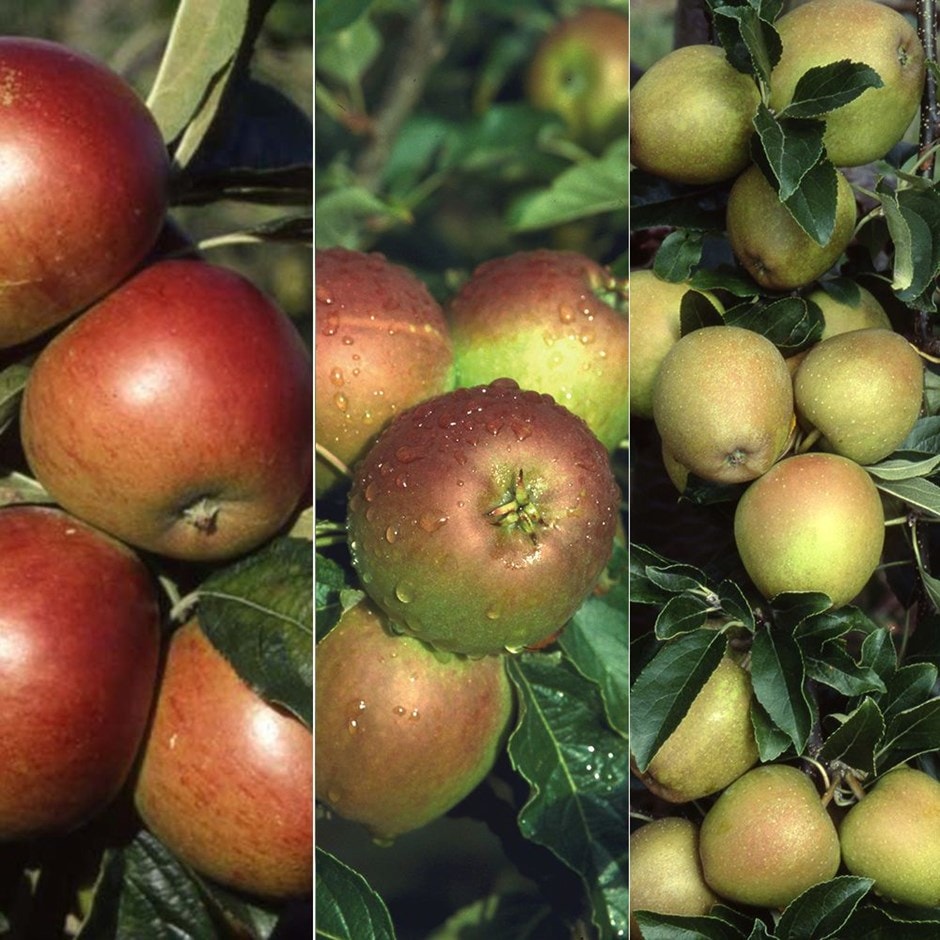apple 'Cox's self Fertile' / 'Fiesta' / 'Hereford Russet'
family apple
This plant is deciduous so it will lose all its leaves in autumn, then fresh new foliage appears again each spring.
- Position: full sun
- Soil: moderately fertile, moist but well-drained soil
- Rate of growth: average to fast
- Flowering period: April to May
- Hardiness: frost hardy - may need winter protection particularly in colder parts of the country
'Family' apple trees are one of the best ways of growing a range of different varieties in a smaller space. That's because each tree has three stems (each producing a different cultivar), grafted onto it. On this tree, you will receive the following mix of eating apples.
'Cox's Orange Pippin' self fertile: - A popular and high-yielding apple, with a rich flavour and delicious aroma.
'Fiesta': (syn. 'Red Pippin') A heavy cropper producing crisp, aromatic fruits. One of the best for colder regions.
'Hereford Russet': These exceptional fruits taste delicious straight from the tree, but they will also store well.
Pollination information: As these trees are made up of several different varieties that can cross pollinate freely, you will not need another pollinating partner.
'Cox's Orange Pippin' self fertile: - A popular and high-yielding apple, with a rich flavour and delicious aroma.
'Fiesta': (syn. 'Red Pippin') A heavy cropper producing crisp, aromatic fruits. One of the best for colder regions.
'Hereford Russet': These exceptional fruits taste delicious straight from the tree, but they will also store well.
Pollination information: As these trees are made up of several different varieties that can cross pollinate freely, you will not need another pollinating partner.
When planting your apple tree, prepare a hole up to three times the diameter of its root system. Fork over the base of the pit in readiness, incorporating plenty of organic matter into the backfill and planting hole. Avoiding frozen and waterlogged soil, trees should be planted out as they arrive. If you've ordered a bare root tree, soak the roots in a bucket of water for half an hour prior to planting - or if this is not possible, they can be heeled in temporarily, covering their roots with soil, or potted up. Once in the ground, stake firmly and keep the base weed-free. Apply a balanced fertiliser in early spring to support growth and fruiting and provide regular watering during hot, dry spells. The main winter prune, avoiding frosty conditions, involves removing dead, dying, and diseased wood to create an open crown. Additionally, reduce leaders and laterals by a third to establish an airy structure without crisscrossing branches. In August, summer prune by shortening side shoots longer than 20cm (8”) back to three leaves, promoting fruit ripening and encouraging more fruit buds.

